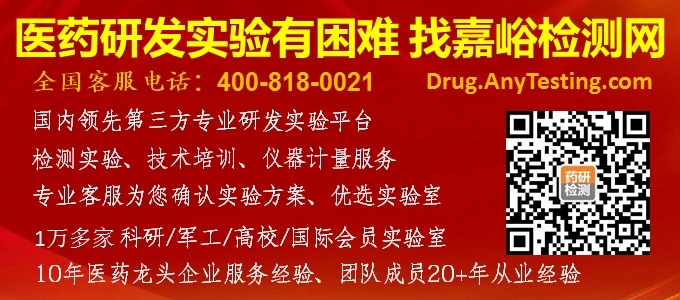2023年5月25日,美国食品药品监督管理局(FDA)批准了口服抗病毒药物Paxlovid(奈玛特韦片和利托那韦片,组合包装供口服使用),用于治疗具有进展为重度COVID-19高风险(包括住院或死亡)的轻度至中度COVID-19成人患者。Paxlovid是FDA批准的第四款用于治疗成人COVID-19的药物,也是第一款口服抗病毒药。
依照紧急使用授权(EUA)生产和包装并由美国卫生与公众服务部(DHHS)分发的Paxlovid将继续提供给成人患者,并确保对此次批准未涵盖的12-18岁符合条件的儿童进行治疗。Paxlovid未被批准或授权用作预防COVID-19的暴露前或暴露后预防药物。
美国FDA药品评价与研究中心(CDER)主任Patrizia Cavazzoni表示,“虽然疫情对我们所有人都是一种挑战,但我们在减轻COVID-19对我们生活的影响方面取得了巨大进展。此次的批准表明,Paxlovid已经达到了美国FDA严格的安全性和有效性标准,对于具有进展为重症高风险的人群(包括先前有免疫力的人群),其仍然是一种重要的治疗方案。美国FDA仍然致力于与研发机构合作,促进COVID-19相关的新的预防和治疗方案的开发。”
根据《联邦食品、药品和化妆品法案》,新药的批准需要充分的有效性证据和对药物预期用途的安全性证明。在考虑批准某种药物时,美国FDA会根据严格的科学标准进行受益-风险评估,以确保产品为目标人群带来的受益大于风险。
Paxlovid的疗效主要由EPIC-HR临床试验的最终结果支持。EPIC-HR是一项随机、双盲、安慰剂对照临床试验,对Paxlovid用于治疗实验室确诊为SARS-CoV-2感染的非住院有症状的成人患者的安全性和有效性进行了研究。入组患者为18岁及以上具有预先设定的发展为重症的风险因素的成人,如果患者年龄在60岁或以上,则不考虑其是否存在预先设定的慢性疾病。所有入组的患者没有接种过COVID-19疫苗,之前也没有感染过COVID-19。28天的随访结果表明,与安慰剂对照组相比,在症状出现后5天内接受Paxlovid治疗的患者(未接受过COVID-19治疗性单克隆抗体治疗)中,因COVID-19住院或因各种原因死亡(全因死亡)的患者比例显著降低了86%。在这项研究中(28天的随访期),977例患者接受了Paxlovid治疗,989例患者接受了安慰剂治疗。在Paxlovid治疗组中,仅有0.9%的患者因COVID-19住院或因各种原因死亡(全因死亡),相比之下,安慰剂对照组的这一比例达到了6.5%。
Paxlovid(图片来源:网络)
Paxlovid的效果在先前有免疫力的患者身上也得到了验证。在EPIC-HR试验入组时抗体呈阳性的患者中,在28天随访期间,接受Paxlovid治疗的490例患者中因COVID-19住院或因各种原因死亡(全因死亡)的风险为0.2%,而接受安慰剂治疗的479例患者中的这一比例为1.7%。EPIC-SR是另一项临床试验,该项试验入组了至少具有一个发展为重症的风险因素且接种过疫苗的患者。虽然没有统计学意义,但在这些接种过疫苗的患者中,与COVID-19相关住院或全因死亡的风险有所降低。
EPIC-HR和EPIC-SR这两项随机对照试验还提供了关于COVID-19反弹的信息。来自这两项试验的数据显示,SARS-CoV-2(RNA或病毒)脱落或COVID-19症状在一小部分患者中出现反弹,且在接受Paxlovid治疗和接受安慰剂治疗的患者中均有发生。根据美国FDA目前掌握的数据,还没有明确证据表明Paxlovid治疗与COVID-19反弹之间存在关联。
由于降低与Paxlovid发生显著药物相互作用的风险的重要性,Paxlovid紧急使用授权(EUA)的批准标签和供医护人员查阅的情况说明书(Fact Sheet)附有黑框警告和处方说明。处方医师应审查患者服用的所有药物,以评估潜在的药物相互作用,并确定患者可能正在服用的其他药物是否需要调整剂量、中断和/或额外监测。处方医师应考虑Paxlovid治疗在减少住院和死亡方面的益处,以及是否可以适当管理个体患者的潜在药物相互作用风险。
美国FDA此次的批准向所有处方医师提供了正确和安全地开具Paxlovid处方的重要信息,例如剂量说明、潜在副作用以及可能与Paxlovid发生药物相互作用的药物的信息。服用Paxlovid最常见的副作用包括味觉受损和腹泻。患者应就其是否适合服用Paxlovid与医生进行沟通。
英文原文
Paxlovid manufactured and packaged under the emergency use authorization (EUA) and distributed by the U.S. Department of Health and Human Services will continue to be available to ensure continued access for adults, as well as treatment of eligible children ages 12-18 who are not covered by today’s approval. Paxlovid is not approved or authorized for use as a pre-exposure or post-exposure prophylaxis for prevention of COVID-19.
“While the pandemic has been challenging for all of us, we have made great progress mitigating the impact of COVID-19 on our lives,” said Patrizia Cavazzoni, M.D., director for the FDA’s Center for Drug Evaluation and Research. “Today’s approval demonstrates that Paxlovid has met the agency’s rigorous standards for safety and effectiveness, and that it remains an important treatment option for people at high risk for progression to severe COVID-19, including those with prior immunity. The FDA remains committed to working with sponsors to facilitate the development of new prevention and treatment options for COVID-19.”
Under the Federal Food, Drug, and Cosmetic Act, approval of a new drug requires, among other things, substantial evidence of effectiveness and a demonstration of safety for the drug’s intended use(s). In considering approval of a drug, the FDA conducts a benefit-risk assessment based on rigorous scientific standards to ensure that the product’s benefits outweigh its risks for the intended population.
The efficacy of Paxlovid was primarily supported by the final results of the EPIC-HR clinical trial. EPIC-HR was a randomized, double-blind, placebo-controlled clinical trial studying Paxlovid for the treatment of non-hospitalized symptomatic adults with a laboratory confirmed diagnosis of SARS-CoV-2 infection. Patients were adults 18 years of age and older with a prespecified risk factor for progression to severe disease or were 60 years and older regardless of prespecified chronic medical conditions. All patients had not received a COVID-19 vaccine and had not been previously infected with COVID-19. Paxlovid significantly reduced the proportion of people with COVID-19 related hospitalization or death from any cause through 28 days of follow-up by 86% compared to placebo among patients treated within five days of symptom onset and who did not receive COVID-19 therapeutic monoclonal antibody treatment. In this analysis, 977 patients received Paxlovid, and 989 patients received placebo, and among these patients, 0.9% who received Paxlovid were hospitalized due to COVID-19 or died from any cause during 28 days of follow-up compared to 6.5% of the patients who received the placebo.
Benefit of Paxlovid was observed in patients with prior immunity to the virus that causes COVID-19. Among patients in EPIC-HR who were antibody positive at trial enrollment, the risk of COVID-19-related hospitalization or death from any cause during 28 days of follow-up was 0.2% among the 490 patients treated with Paxlovid compared with 1.7% of the 479 patients receiving placebo. EPIC-SR was another clinical trial that enrolled vaccinated patients with at least one risk factor for progression to severe COVID-19. Although not statistically significant, among these vaccinated patients, there was a reduction in the risk of COVID-19 related hospitalization or death from any cause.
EPIC-HR and EPIC-SR were randomized controlled trials and provide information about COVID-19 rebound. Data from these two trials showed that rebound in SARS-CoV-2 (RNA or virus) shedding or COVID-19 symptoms occurred in a subset of patients and happened in both the patients receiving Paxlovid and the placebo. Based on the data currently available to the FDA, there is not a clear association between Paxlovid treatment and COVID-19 rebound.
Because of the importance of reducing the risk of significant drug-drug interactions with Paxlovid, the approved label and authorized Fact Sheet for Health Care Providers for the Paxlovid EUA come with a boxed warning with instructions for prescribers. Prescribers should review all medications taken by the patient to assess for potential drug-drug interactions and determine if other medicines that a patient may be taking require a dose adjustment, interruption and/or additional monitoring. Prescribers should consider the benefit of Paxlovid treatment in reducing hospitalization and death, and whether the risk of potential drug-drug interactions for an individual patient can be appropriately managed.
In conjunction with today’s approval, the FDA is providing all prescribers with important information for prescribing Paxlovid properly and safely, such as dosing instructions, potential side effects and information regarding drugs that may cause drug-drug interactions with Paxlovid. The most common side effects of taking Paxlovid include impaired sense of taste and diarrhea. Patients should discuss with their health care provider whether Paxlovid is right for them.
来源:European Commission
原文链接:https://www.fda.gov/news-events/press-announcements/fda-approves-first-oral-antiviral-treatment-covid-19-adults





